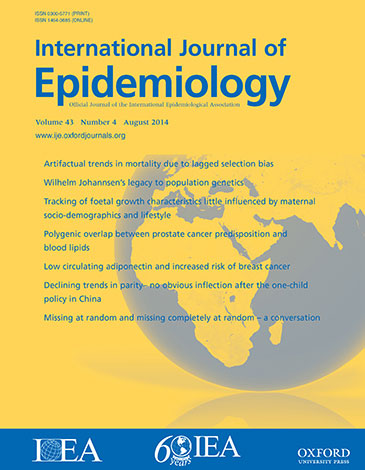Quantifying disruptions to tuberculosis case detection in Brazilian states during the COVID-19 pandemic.
IF 5.9
2区 医学
Q1 PUBLIC, ENVIRONMENTAL & OCCUPATIONAL HEALTH
引用次数: 0
Abstract
BACKGROUND Globally, tuberculosis (TB) surveillance and care were severely impacted by the COVID-19 pandemic. In Brazil, TB notification rates decreased in the first 2 years of the pandemic. There is a need for rigorous model-based methods to quantify the impact of health system disruptions on TB control. In this study, we aimed to assess how the COVID-19 pandemic affected both incidence and case detection in Brazilian states. METHODS We used a Bayesian evidence synthesis model to estimate TB incidence and case detection rates over the period 2016-21 by using routinely collected case notification and mortality data. We then used a meta-regression framework to estimate factors associated with state-level rates of undiagnosed symptomatic TB. RESULTS We found that the probability that an individual with symptomatic TB was diagnosed decreased in the majority of states in April 2020 (median = -10.4%age points, interquartile range = -6.6, -16.2). Incident TB decreased slightly in April 2020 and rebounded beginning in 2021. Together, this led to an increase in missed TB cases in nearly every state during the pandemic. Nationally, we estimate that there were 20 671 (95% credible interval: 19 249, 22 501) missed TB cases between April 2020 and December 2021. CONCLUSION Disruptions to the Brazilian healthcare system during the COVID-19 pandemic prevented tens of thousands of individuals with symptomatic disease from receiving a TB diagnosis. While some Brazilian states recovered rapidly to pre-pandemic levels of TB case detection, many did not and the rates of missed TB cases remained high through 2021.量化2019冠状病毒病大流行期间巴西各州结核病病例发现受到的干扰。
背景在全球范围内,结核病监测和治疗受到COVID-19大流行的严重影响。在巴西,结核病通报率在大流行的头两年有所下降。有必要采用严格的基于模型的方法来量化卫生系统中断对结核病控制的影响。在这项研究中,我们旨在评估COVID-19大流行如何影响巴西各州的发病率和病例发现。方法采用贝叶斯证据综合模型,利用常规收集的病例报告和死亡率数据,估计2016-21年期间的结核病发病率和病例检出率。然后,我们使用元回归框架来估计与州一级未确诊的症状性结核病发病率相关的因素。结果我们发现,在2020年4月,大多数州诊断出有症状结核病的个体的概率下降(中位数= -10.4%年龄点,四分位数间距= -6.6,-16.2)。突发结核病在2020年4月略有下降,并于2021年开始反弹。总之,这导致在大流行期间几乎每个州的漏诊结核病病例都有所增加。在全国范围内,我们估计在2020年4月至2021年12月期间有20671例(95%可信区间:19249,22501例)遗漏结核病病例。结论:2019冠状病毒病大流行期间,巴西卫生保健系统受到干扰,导致数万名有症状疾病患者无法获得结核病诊断。虽然巴西一些州的结核病病例检出率迅速恢复到大流行前的水平,但许多州没有恢复到大流行前的水平,到2021年,结核病漏诊率仍然很高。
本文章由计算机程序翻译,如有差异,请以英文原文为准。
求助全文
约1分钟内获得全文
求助全文
来源期刊

International journal of epidemiology
医学-公共卫生、环境卫生与职业卫生
CiteScore
13.60
自引率
2.60%
发文量
226
审稿时长
3 months
期刊介绍:
The International Journal of Epidemiology is a vital resource for individuals seeking to stay updated on the latest advancements and emerging trends in the field of epidemiology worldwide.
The journal fosters communication among researchers, educators, and practitioners involved in the study, teaching, and application of epidemiology pertaining to both communicable and non-communicable diseases. It also includes research on health services and medical care.
Furthermore, the journal presents new methodologies in epidemiology and statistics, catering to professionals working in social and preventive medicine. Published six times a year, the International Journal of Epidemiology provides a comprehensive platform for the analysis of data.
Overall, this journal is an indispensable tool for staying informed and connected within the dynamic realm of epidemiology.
 求助内容:
求助内容: 应助结果提醒方式:
应助结果提醒方式:


